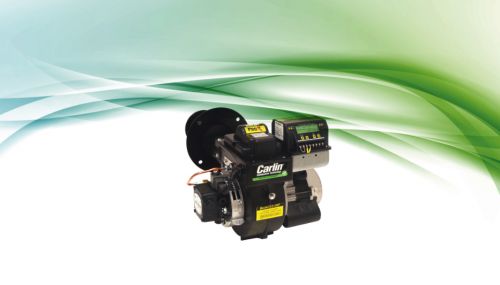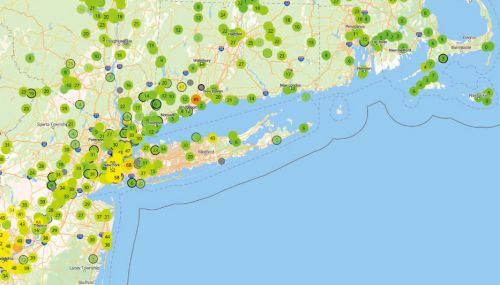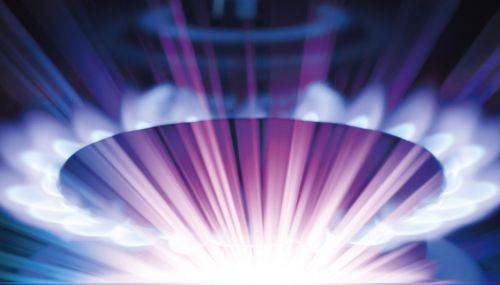NORA aims to help dealers use hard data to demonstrate potential energy savings and motivate customers to upgrade
By John MacKenna
Selling new Oilheat equipment can be a challenge, and the industry is looking for powerful, data-driven tools to demonstrate potential energy savings to customers in order to motivate them to upgrade.
The National Oilheat Research Alliance (NORA) will work with equipment manufacturers and Oilheat dealers to develop sales tools that leverage data from previous upgrades to model potential energy savings. Customers often need some convincing after they compare the AFUE (Annual Fuel Utilization Efficiency) number on the new equipment to that of their current equipment. The AFUE numbers suggest that the new equipment will offer an efficiency gain of less than 10 percent, when the actual improvement would be in the range of 20 to 40 percent.
“There are a number of good ideas circulating in the industry on how to save energy, from rebates, to having better testing equipment, to providing information to affiliated trades,” said NORA President John Huber. “As these are implemented and moved through, NORA will be tracking the energy savings of these homes to ensure they are saving energy, and how much.”
Making Potential Savings Real
At least one manufacturer, Energy Kinetics, of Lebanon, N.J., is already demonstrating potential energy savings with data-based tools. Energy Kinetics uses online apps and data-intensive case studies to help customers understand actual savings potential. Energy Kinetics President Roger Marran recently told Oil & Energy that it is crucial for salespeople to make potential energy savings real for customers.
“Heating contractors who understand that savings can be much greater than AFUE alone have a much broader opportunity to help consumers cut energy bills – and that’s something everyone is looking for today,” he said. “It’s simply a powerful tool to sell more effectively.”
Marran said that many customers put off the decision to purchase new heating equipment because they see only a small difference between their existing boiler’s AFUE and new equipment options. “This is often expressed by building performance analysts as well, so heating professionals have a great advantage in that they can deliver 20 percent to 40 percent savings which are otherwise hidden from view,” he said, “By uncovering the savings shown in field savings histories, NORA’s Fuel Savings Analysis (FSA) Program, and the Brookhaven National Laboratory’s study on integrated systems, our industry can deliver some of the best whole house savings available, often in just one day. And customer service people have a new tool. They can say, ‘I can’t cut your fuel cost, but I can cut how much it costs to heat your home.’ It’s no longer all about the posted price on fuel.”
Marran said homeowners are more likely to move ahead with an upgrade when they understand the true potential. “Once they know what they may save, every minute they wait is wasting money,” he said.
The AFUE rating, which federal law requires on every new central heating appliance, misleads customers because it is inaccurate. “AFUE essentially rates the efficiency when the burner is running,” Marran explained. “Wasted energy during idle periods can be very substantial and is also missed with combustion efficiency. Savings can be 20 percent to 40 percent or even more, especially if the system is older or has a non-retention head burner.”
Telling the Story
Energy Kinetics supports its contractors with its SmartHeat™ app and with customer case studies that it develops with the contractors. “Our SmartHeat™ App estimates fuel savings, return on investment, reduction in greenhouse gases, and more with just a few quick taps of an iPad or tablet,” Marran explained. “You never know what someone’s hot buttons may be, so it’s easy to hold out the results and let the homeowner navigate to what interests them the most.”
The app presents savings in gallons or therms; cost savings in current fuel prices (not escalated); and savings over lifetime of operation – all normalized with local weather station data.
Technicians, salespeople and CSRs can all make use of the app, which incorporates sophisticated performance data developed by Brookhaven National Laboratory on several types of heating systems. A technician can help a customer understand the savings that a system upgrade could deliver, and a salesperson or CSR can help customers appreciate how their company can play an important role in reducing the high cost of fuel.
Similar to the SmartHeat™ app, Energy Kinetics’ case studies use hard data to demonstrate savings potential. To participate, a contractor submits before-and-after data on an installation of an Energy Kinetics boiler. “They can be run very quickly from oil and propane dealers who have access to fuel records, or by a customer who has natural gas by asking them for fuel records or asking them to request a utility billing summary,” Marran said. “Just print out a two-plus years of before history and a one-plus year of after history. More data is better, and all deliveries must be listed separately to normalize the data properly.”
Dealers can add data and information that helps make the case study more compelling. “It’s great to get personalized quotes from the customer and dealer, and more details from the specific installation, including prior system information and any comfort areas that were improved,” said Marran. “We also like to know if there were any lifestyle changes, such as number of occupants, building additions, longer showers, supplementary heat, etc. although we do not make adjustments that would improve the savings documentation regarding this information. Photos from the home or installation also demonstrate craftsmanship, and the home size may be similar to a prospect’s to further help the sale.”
The Energy Kinetics marketing team professionally produces summary information including a bar chart of savings and savings over the life of the system, which is often “eye-popping,” according to the company President. Case study participants are often so thrilled with the performance of their new boiler that they help the dealer by speaking with other customers who are considering upgrades. “These dealers really stand apart because others don’t do this,” Marran added. “It demonstrates their commitment to their customers, and it often helps them keep the account for years to come.”
Improving the Close Rate
Stocker Home Energy Services uses case studies extensively in its equipment sales. The Peabody, Mass., retailer has been working with Energy Kinetics since 1984 and has developed about three dozen case studies highlighting its Energy Kinetics installations.
Sales Manager Dan Gilbert said the case studies are excellent sales tools that help him achieve a closing rate of 70 percent. “I must say that it is extremely important to explain to the customer how much energy they can save, because energy saved equates to money saved,” he said. “We have done many case studies on our customers who have upgraded their heating systems, and I have used that information to show the money saving potential for customers thinking of a heating upgrade.”
The case studies help customers understand how much they can save year after year, which is a strong motivator to upgrade the heating system. “The customers definitely respond to the amount of money that they can save, and there is nothing like showing them in black and white the amount of money other customers have saved by upgrading their heating systems,” Gilbert said.
Preparing the case studies with Energy Kinetics is a manageable job, according to Office Manager Mariel Stocker. She gathers at least two years’ worth of historical oil usage data for the account being profiled, plus the first year of oil usage data post-installation. She also tries to provide before-and-after photos of the boiler installation as well as an exterior shot of the home.
Energy Kinetics uses degree-day data to enable an accurate year-to-year comparison and produces an attractive, brightly colored and laminated printout that summarizes the fuel usage data and highlights the realized savings in dollars. The document lists facts such as how many gallons were used each year and the number of gallons saved with the new boiler. “When they see it on paper, it’s proof of how much other homeowners have saved,” Gilbert said.
Company owner Dick Stocker said that case studies express energy savings in real dollars, and people relate well to that. “Their disposable income is very important to them,” he said. “When you show them a case study that shows savings in one year of $1,788, that figure sticks in their head. Year after year, that adds up to a significant amount of disposable income. It really opens their eyes.”
Gilbert said he often introduces a case study document at a critical point in a sales meeting, such as when a potential buyer says they heard about a neighbor who saved only 10 percent with an upgrade. “It’s a great sales tool,” he added. “One of the best.”
Another Energy Kinetics contractor that uses case studies to support equipment sales is Maritime Energy, a regional service provider based in Rockland, Maine. Ron Linscott, Equipment Sales Representative, said Maritime has worked with the manufacturer to produce about a dozen case studies. He said he uses them often to show customers how much money they could be saving.
Customers are often hesitant about upgrading, but they seem to respond to hard data in the case studies, and they appreciate the fact that local people are profiled, according to Linscott. Some customers have given Maritime permission to share their contact information with prospective buyers, and that is very helpful, he added. Linscott also uses Energy Kinetics’ SmartHeat™ app, and he finds that younger customers really appreciate it when he calculates their potential savings.
NORA Looks to States
Sales tools like the ones that Energy Kinetics provides could become available to all Oilheat dealers in the future from NORA. The Alliance is currently surveying the states to better understand what demonstration tools are currently in use and what seems to work. “After that survey is completed, we will analyze it and provide some recommendations for the states,” Huber said.
He said it would be good for the states to try a couple of approaches and see what works best, and then see if such solutions could be implemented on a national level. He expects manufacturers to drive the development of demonstration tools, since those tools would serve to boost equipment sales.
Several experts in service and installation told Oil & Energy that it is essential to help customers see beyond AFUE and understand the true energy savings potential of high-efficiency Oilheat equipment.
Ralph Adams, Service Manager at Parker Fuel, in Ellicott City, Md., and Education Co-Chairman for the National Association of Oil & Energy Service Professionals (OESP), said many Oilheat customers think they have to convert to another fuel to save money. Savings from Oilheat system upgrades can range up to 60 to 70 percent, particularly if the current system is oversized, but the customers simply don’t know that.
Adams tried to use the Fuel Savings Analysis calculator that NORA launched in 2007, but he found it too confusing. He now uses system design software that enables him to estimate potential fuel costs on a new system, and he offers up that data to help customers understand what they could save. His software is generally accurate within 10 percent of the realized energy savings, he said.
Given his own experiences with demonstrating potential savings, Adams believes other salespeople could benefit from demonstration software, but he was quick to point out that additional sales training is also important.
Choose Words Wisely
Taco FloPro Trainer John Barba also believes that demonstration tools would be helpful, although he cautions against getting into the predictions business, because customers will remember what you said, and if the savings they achieve don’t measure up, they are likely to complain. “If someone has a new high efficiency boiler, they start thinking they don’t have to keep the house at 68 any more, and that changes the whole equation,” he said. Year-to-year variations in degree days present another challenge in predicting energy savings.
“I think best way is to look backwards,” Barba said. “If a dealer has a really good idea of what the customer spent previous year, it’s fairly easy to ascertain (usage), and then it’s OK to do simple math formulas and say, ‘This is what you used last year with your existing 80 percent unit.’ If you then put a new high efficiency model and degree day information into a math formula, you can say, ‘This is what you would have spent if you had new equipment.’ You get a comparison that is a heckuva lot less theoretical. That is a comparison, not a prediction.”
One concern is that comparisons require an accurate heat loss analysis for the home. “You can’t just figure BTU per square foot,” Barba said.
Several software programs offer heat loss calculation, and he recommends that salespeople calculate the heat loss, even though there is a lot of time involved in measuring the home. “Someone once said sales is the easiest low-paying job and the hardest high-paying job. There is work involved if you want to be successful,” he added.
One line of argument that doesn’t work is discussing “payback” or “return on investment,” the Taco trainer said. “Unless your boiler gets a paper route, it’s not going to pay you back. It eats fuel and poops heat. It doesn’t generate wealth or income. A good boiler will reduce the amount of money you have to spend to keep warm.”
The time to compare is when a boiler is on its last legs and the customer needs to replace it. At that time it makes sense to compare all the benefits of the different systems they are considering. If one model is standard and another is high efficiency with an indirect water heater and variable speed circulators, there will be differences in system economy and performance. Salespeople should focus just as much on quiet operation and endless hot water as they do on system efficiency, because those are real benefits that matter to homeowners.
What really saves customers money is economical system operation, and that requires more than just a high-efficiency appliance. It must be properly installed with the correct components, or it will not save the customer as much as it could. Neither the AFUE nor the combustion efficiency of a system is a realistic predictor of how it will operate if it the appliance and components do not complement each other, according to Barba.
Hard Data Helps
If a company can use data from past installations to demonstrate results and can point to specific satisfied customers, that is more convincing than any prediction they can make, according to Barba. “If you can demonstrate that you replaced 10 boilers and each customer experienced a reduction in energy costs, and say here are the names and numbers, it doesn’t get much better than that,” he said. “People don’t want to be the first schmuck to fall for your lines. They want to know that others have done it and had success.”
Al Breda, Service Manager at Sippin Energy, in Monroe, CT, and Education Co-Chair for OESP, said homeowners don’t necessarily appreciate the potential for energy savings in their homes. “The main concern of homeowners seems to be fuel cost, not quantity of the fuel they consume. With the push for natural gas expansion and the difference in fuel cost, many homeowners are selecting to switch fuels first,” he said. “After that they look at which system to install as a replacement, and I find that many go for a low cost option for conversion. Many fail to look at the house as a whole before making decisions.
“Energy efficient devices including smart thermostats and temperature reset controls can have a quick return on a modest investment and leave plenty left in the budget for other home energy upgrades.”
Breda said the Oilheat industry could benefit from a system that demonstrates achieved savings in finished installations. “I see the challenge as getting that information to the general public in a way that would insure the information is used to compare scenarios in a proper way,” he said. “There are a lot of condensing boilers being installed in high temperature applications such a fin tube baseboard and hydro-air air handlers. The AFUE ratings sell the equipment, but in these applications the boilers aren’t condensing most of the time, and the actual AFUE is lower most of the time. Since installation practices vary with contractors, things like proper piping practices and sizing need to be considered in that databank.
“We have records of how different boilers, indirect water heaters, and controls have saved other customers fuel in the past. That way we can compare like systems and proposals for new equipment and have a realistic expectation of savings. We also keep up with any manufacturer or state rebates along with financing options,” he added. “Whenever someone needs a significant repair to a heating or cooling system, a Home Comfort Specialist is given the cost of repair to quote the customer along with the invitation for a free estimate to upgrade.”
Software Makes an Impression
A software platform that projects potential savings for customers could be helpful, according to Breda. “Getting the information in the hands of consumers is very important. It must be presented in a way that applies to the customer’s system to be accurate and gain acceptance. I do not like to over-promise savings, but an accurate comparison of the way different systems would perform would be a big help,” he said.
Energy Kinetics’ Marran also believes in the use of software apps. “There is an expectation that businesses use the latest technology, and those that don’t can be left behind, especially for the under-40 crowd,” he said. Good mobile apps can separate and elevate a contractor versus the competition. “It helps you close in a single visit, saving time and opening up the possibility for more sales,” he said. “It can really drive HVAC as a profit center, and very little training is involved to start using our SmartApps.”
He said that a powerful toolkit, especially if embraced by technicians who are the trusted representatives in homes, could open up an exceptional opportunity to upgrade older equipment to modern, quiet, more reliable systems. “Combined with super clean burning ULS fuels and Bioheat® fuel, it’s a new era for Oilheat,” Marran added. “This can help bridge the gap between today’s prices and the price spread vs. alternate fuel sources. And when fuel prices converge in the future, the results will accelerate, and dealers will be ready with a strong history of doing what’s right for the customer and delivering the best in energy efficiency and savings.”





